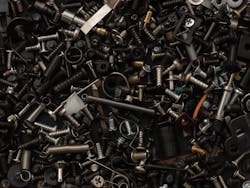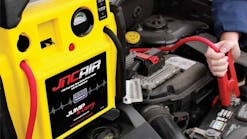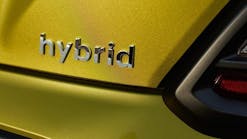Blog: Induction heating and the difference between ferrous and non-ferrous metal
Induction Innovations often receives questions about whether or not induction heating is useful for different applications, such as brazing copper. Copper is a non-ferrous metal, and induction heat only works on ferrous metals, so brazing copper is not a good application for the Mini-Ductor or Inductor Series of induction heating products. However, they are ideal for removing lug and wheel nuts because they are made of steel, a ferrous metal.
Copper is only one example that illustrates the differences between ferrous and non-ferrous metals, as well as how our products are best used in specific applications. Below is a review of the properties of ferrous and non-ferrous metals and how induction heating can be used.
The short answer: ferrous vs. non-ferrous metal
Ferrous metals and alloys contain iron, while non-ferrous metal does not carry the mineral. These metals also contain steel. However, it’s a bit more complicated. Both ferrous and non-ferrous materials have their own distinctive properties, which determine what applications they are best suited for. The selection of the right type of metal for your project can be critical, especially if induction heat is being considered.
Ferrous metals
Ferrous metals include alloy steel, carbon steel, cast iron, and wrought iron. The chief characteristics of these metals are their tensile strength and durability. They are magnetic and because of this, projects that require highly durable and strong materials use this type of metal. There are often other elements added to ferrous metals like iron and steel (e.g., copper and nickel) that add to properties (e.g., reducing corrosion, increasing strength.)
You will find ferrous metals in the construction industry for the building of skyscrapers and bridges, as well as in specific industry products like automobiles, shipping containers, rails for railroads, and many of the tools and hardware you use on the jobsite and at home.
Properties of ferrous materials
Large amounts of carbon are used when creating ferrous materials, meaning most are vulnerable to rust. While not all ferrous materials (such as wrought iron and stainless steel) are sensitive to oxidization, chances are, if it rusts, it’s a ferrous metal.
As mentioned, most ferrous metals also have magnetic properties, though only a few, called ferromagnetic materials, exhibit magnetic properties of significant strength. These materials include nickel, iron, and cobalt. Ferrous metals combined with these materials become magnetized when exposed to an external magnetic field. Their magnetic properties make them very useful for manufacturing such things as large motors and electrical appliances.
Use induction heating with projects constructed with ferrous metals. Induction Innovations has heating tools that provide high performance characteristics for your specific applications.
Non-ferrous metals
Non-ferrous metals include aluminum, copper, brass, nickel, tin, lead, zinc, and chrome (chromium), as well as precious metals like gold and silver. While some non-ferrous metals are quite strong, they are usually utilized for their other properties that ferrous materials do not have.
Core uses for non-ferrous metals surround their ability to be used for products needing lightweight, conductive, and protective properties.
Properties of non-ferrous metals
As non-ferrous metals are much lighter than ferrous metals, they are well-suited for such industries as aviation and canning. Cans (made of aluminum) can be configured easily through forging, casting, and other types of manipulation to create an efficient product casing. Aircraft components are also constructed with aluminum, particularly airplane frames.
Non-ferrous metals are also more resistant to rust and corrosion. Elements like copper are often used for such items as roofing, water pipes, and road signs. Copper items are conductive and conducive for many applications.
Finally, non-ferrous metals are not magnetic, which makes them valuable for use in electrical wiring and small electronics.
Combining ferrous and non-ferrous metals
Numerous alloys are made using a combination of ferrous and non-ferrous metals. For example, stainless steel is often created with chromium and steel, due to its ability to be non-magnetic and non-corrosive. The percentages of elements used create vastly different overall properties. You will find that a stainless-steel refrigerator may struggle to hold certain magnets, based on the amount of nickel that has been mixed in with the iron alloy.
Other combinations of ferrous and non-ferrous metals are also prevalent across industries to reduce cost and provide specific manipulation characteristics when necessary.
Talk with the induction heating experts
Induction heating is most useful on ferrous metals because of its magnetic properties. However, induction heating can also be used to heat up aluminum in certain applications, which is often enough to remove decals, vinyl, and bonded trim.
If you’re not sure whether induction heating will work for your application, get in touch with an induction heating expert to find out. We will work with you to address your concerns and to provide you with the correct products for your needs.
Information provided by Induction Innovations



